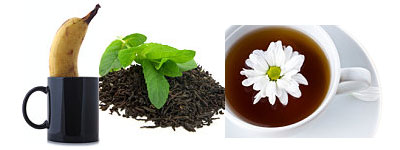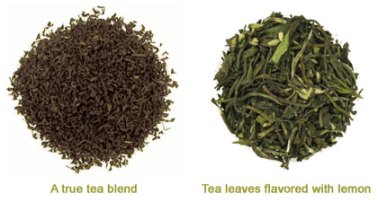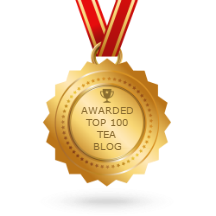Or “Why is there a banana in your teacup?”
In response to a recent online post soliciting feedback about a new chocolate-peanut butter “tea,” I wrote that I enjoy peanut butter cups with my tea, not in it. I was outnumbered by dozens of commenters who thought it sounded divine. Several included lists of their favourite teas – every single one a tea with added flavours.

This got me wondering: How many people think “tea” refers to brown water flavoured with fruit, nuts, candy, flowers, or some combination of these? Who think that tea leaves serve only as vehicles for random additives? Who do not enjoy tea for the pleasure of the leaf itself, but for what’s added to it?
Since my first taste of oolong tea as a kid at our local Chinese restaurant, I’ve discovered hundreds of types of varietal teas, each with a unique personality. What a pity if they had been masked with added flavourings!
Yes, I admit that I’ve dabbled in flavoured teas. Largely inspired by Jean-Luc Picard’s command to his replicator, I tried plenty of ‘em from vanilla to chocolate, pina colada to banana-kiwi-strawberry, and of course Earl Grey.
I learned that if I want to complement my tea, I’ll toast up a crumpet and slather it with jelly. The tea stays in my cup and the other flavours stay on my plate, not blurring into each other long before they reach my palate.
Tea’s unlimited variety of tastes and aromas are inherent in the leaf itself: the bravado of black teas, the nuances of white teas, the flowery elegance of an oolong, the vegetal smoothness of a well-made green tea. How can anyone choose flavours borrowed from a candy bar or a jam jar over a pure golden Assam that miraculously evokes raisins and cocoa?
Fruit salad or radish sandwiches are tasty with tea. Banana-radish-cantaloupe “tea,” however, is simply a melange of additives that happen to be sitting on a pile of unlucky tea leaves. Tea offers a myriad of tastes and aromas. So why does anyone need added flavourings in their teacup?
And why are flavoured teas called “tea blends?”

A true tea blender understands the distinct flavour and aroma profile of each tea, and how to balance one with another – from basic “supermarket” type blends like PG Tips or Barry’s to Harney’s exquisite Eight at the Fort Blend.
Imagine understanding tea so well that you can blend eight (or more) of them together in perfect harmony with no additives. It’s sheer artistry for the blender, and pure enjoyment for the drinker. There’s simply nothing that compares to pure tea and water and the opportunity to coax out and discern the specific qualities of those particular leaves.
 So I still have to say “No thanks” to chocolate-peanut butter “tea.” And wonder what’s next …
So I still have to say “No thanks” to chocolate-peanut butter “tea.” And wonder what’s next …
(For an exhaustive study of the many taste and aroma profiles of teas, and how to develop a palate to discern them, see Michael Harney’s book Guide to Tea.)
See also:
An Orchard in Your Teapot, Pt. III — Teas with Fruity Aroma and Flavor
An Orchard in Your Teapot, Pt. I – Fruit in Your Tea
A Bouquet in Your Teapot, Pt. III — Teas with Floral Aroma and Flavor
A Bouquet in Your Teapot, Pt. I — Flowers in Your Tea
Handle with Care: Floral Tea Flavors
All Flavored Teas Are Not Created Equal
English Breakfast Blend No. 2 by English Tea Store
Blending Your Leftover Teas
Blend Your Own Tea
Some Tea Blends I Hope to Never See (actually, flavored teas)
Russian Tea Blends
Tea Book Review — “The Harney & Sons Guide to Tea”
© Online Stores, Inc., and The English Tea Store Blog, 2009-2014. Unauthorized use and/or duplication of this material without express and written permission from this article’s author and/or the blog’s owner is strictly prohibited. Excerpts and links may be used, provided that full and clear credit is given to Online Stores, Inc., and The English Tea Store Blog with appropriate and specific direction to the original content.



Leave a reply to Roundtable Topic: Sweeteners and Tea « Tea Blog Cancel reply